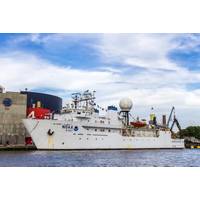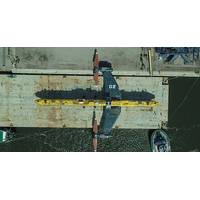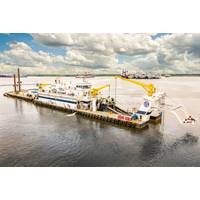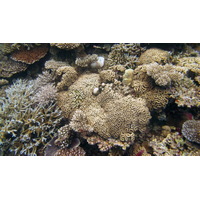
White House Aims to Eliminate NOAA Climate Research
The administration of President Donald Trump aims to eliminate the arm of the National Oceanic and Atmospheric Administration (NOAA) that oversees research on climate change and refocus the U.S. fisheries service to support energy development, according to a draft White House budget document seen by Reuters.The moves are part of a plan to downsize NOAA dramatically, slashing agency funding by around $1.67 billion, or 27%, according to the proposal.The Office of Oceanic and Atmospheric Research, known also as NOAA Research, would be closed under the proposal, along with $480 million in funding for

Utility Serving San Juan Islands Proposes to Harness Tidal Power
maximum generating capacity of approximately 2 megawatts with an annual output of 4.6–5.6 gigawatt hours annually — able to power 400 homes.As part of the permitting process, OPALCO anticipates state and federal interagency engagement with the U.S. Army Corps of Engineers, the National Marine Fisheries Service, the U.S. Fish and Wildlife Service, the Washington Department of Fish and Wildlife, the Washington Department of Ecology, the Washington Department of Natural Resources and the Federal Energy Regulatory Commission.Once the necessary environmental studies have been completed, permitting

Callan Marine Wins North Breton Island Restoration Project
The U.S. Fish and Wildlife Service (USFWS) recently awarded a $54 million construction contract to Callan Marine, Ltd. for the North Breton Island Restoration Project. The funds for the project come from the Deepwater Horizon Natural Resource Damage Assessment oil spill global settlement reached in 2016.Located northeast of Venice, La., the restoration project includes dredging 5.7 million cubic yards of material in order to restore the barrier shoreline through beach, dune, and marsh fill placement. It will utilize an offshore sand source located just a few miles away in the Gulf of Mexico.Callan

Study: How Much of Corals’ Nutrition Comes From Hunting
how corals will respond to future changes.”Also collaborating on the paper were Emma A. Elliott Smith of the University of New Mexico, and Jennifer E. Smith of the Scripps Institution of Oceanography. The research was conducted under special use permits #12533-14016 and #12533-14012 from the U.S. Fish and Wildlife Service, Palmyra Atoll Research Consortium (PARC). Funding was provided by the Scripps Family Foundation, private donors, and the NOAA Nancy Foster Scholarship
High Correlation of Biomass to Species Diversity in Northern Chukchi Sea - BOEM Study
seasonal cycles and increasing human activities in the Arctic make this region particularly important to monitor. In August 2015, the AMBON team of researchers from the University of Alaska’s School of Fisheries and Ocean Sciences, the University of Maryland, University of Washington, US Fish and Wildlife Service, and the National Oceanic and Atmospheric Administration (NOAA) embarked on their first field effort under this project to sample marine biodiversity on the Chukchi Sea shelf. Despite challenging weather conditions, the team was able to complete sampling of the entire Chukchi shelf from
BOEM Proposes New Regulation for OCS
use or commodity minerals such as gold. The rule details the requirements for requesting a negotiated agreement for qualifying projects, including technical information on the potential sand borrow site and environmental evaluations and consultations with Federal agencies, such as the National Marine Fisheries Service, on potential impacts from the project. The proposed rule also addresses BOEM’s review procedures for processing requests, the process and timelines for requesting lease modifications, and defines commonly used terms. BOEM’s Marine Minerals Program is critical for the long-term
NOAA, Deepwater Horizon Trustees Announce Draft Restoration Plans
3.19 million barrels (134 million gallons) of oil were released into the Gulf of Mexico, making it by far the largest offshore oil spill in United States history. In the draft plan, the Trustees provide documentation detailing impacts from the Deepwater Horizon oil spill to: wildlife, including fish, oysters, plankton, birds, sea turtles, and marine mammals across the Gulf habitat, including marshes, beaches, floating seaweed habitats, water column, submerged aquatic vegetation, and ocean-bottom habitats recreational activities including boating, fishing, and going to the beach The Trustees determined
Shell Gets APD for limited Arctic Drilling
their work around the clock to ensure the utmost safety and environmental stewardship.” In addition to restricting Shell’s ability to work in oil-bearing zones, the APDs also define limitations related to marine mammal protection consistent with requirements established by the U.S. Fish and Wildlife Service (USFWS). Consistent with regulatory requirements, a USFWS Letter of Authorization (LOA) issued on June 30 requires Shell to maintain a minimum spacing of 15 miles between active drill rigs during exploration activities to avoid significant effects on walruses in the region. Under
Shell Steps Closer to Arctic Drilling
The U.S. Fish and Wildlife Service authorized the nonlethal, incidental, and unintentional take of small numbers of polar bears and Pacific walrus that result from Shell’s exploratory drilling activities in the Chukchi Sea. The agency gave authorization despite finding information gaps regarding walrus and polar bear behavior in offshore environments, the immediate and long-term responses of these animals to drilling operations, and the subsistence hunting activities of several Native villages. With this authorization, Shell only requires one more drilling permit from the Bureau of


 February 2025
February 2025





